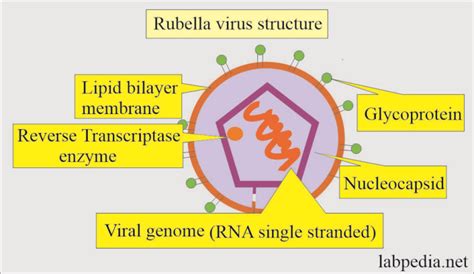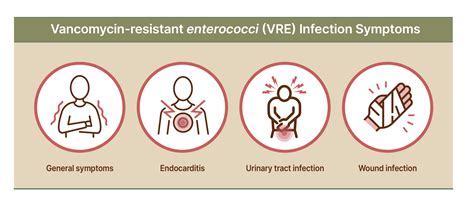Intro
Learn about Rubella Virus, also known as German Measles, its symptoms, causes, and prevention methods, including vaccination and treatment options for this contagious viral infection.
The rubella virus, commonly known as German measles, is a highly contagious infection that affects millions of people worldwide. Despite its relatively mild symptoms, rubella can have severe consequences, particularly for pregnant women and their unborn babies. Understanding the importance of rubella and its implications is crucial for maintaining public health and preventing outbreaks. In recent years, there has been a resurgence of interest in rubella, driven by advances in vaccine development and the need for improved global health strategies. As we delve into the world of rubella, it becomes clear that this virus is more than just a minor illness – it's a significant public health concern that demands attention and action.
Rubella is a member of the Togaviridae family, which includes other viruses such as Sindbis and Chikungunya. The virus is spread through respiratory droplets, contact with contaminated surfaces, and vertical transmission from mother to child during pregnancy. The incubation period of rubella typically ranges from 14 to 21 days, during which time the infected individual may not exhibit any symptoms. However, once the symptoms appear, they can be quite distinctive, including a characteristic rash, fever, and lymphadenopathy. While rubella is often mild and self-limiting, it can cause significant morbidity and mortality, particularly in vulnerable populations such as pregnant women, newborns, and individuals with compromised immune systems.
The history of rubella dates back to the 18th century, when it was first described by German physicians. However, it wasn't until the mid-20th century that the virus was isolated and characterized. The development of vaccines in the 1960s revolutionized the control of rubella, leading to a significant decline in cases and outbreaks. Despite these advances, rubella remains a significant public health concern, particularly in regions with low vaccination coverage and inadequate healthcare infrastructure. As we explore the complexities of rubella, it becomes clear that a comprehensive understanding of the virus, its transmission, and its consequences is essential for developing effective prevention and control strategies.
Rubella Virus Structure and Transmission

Rubella Virus Replication and Pathogenesis
The replication of the rubella virus occurs in the cytoplasm of infected cells, where the viral RNA is translated into proteins. The virus then assembles and buds from the infected cell, releasing new viral particles into the surrounding tissue. The pathogenesis of rubella involves the infection of various cell types, including epithelial cells, lymphocytes, and monocytes. The virus triggers an immune response, which can lead to the production of antibodies and the activation of immune cells. However, in some cases, the immune response can be inadequate, leading to persistent infection and complications.Clinical Manifestations of Rubella

Rubella in Pregnancy and Congenital Rubella Syndrome
Rubella during pregnancy is a significant concern, particularly during the first trimester. The virus can cross the placenta and infect the developing fetus, leading to congenital rubella syndrome (CRS). CRS is characterized by a range of birth defects, including deafness, blindness, heart defects, and intellectual disability. The risk of CRS is highest when the infection occurs during the first 12 weeks of gestation, and it can be reduced by vaccination and proper prenatal care.Diagnosis and Laboratory Testing

Treatment and Management of Rubella
The treatment of rubella is primarily supportive, focusing on relieving symptoms and preventing complications. Antipyretics and analgesics can be used to manage fever and pain, while antibiotics may be prescribed to treat secondary bacterial infections. In some cases, hospitalization may be necessary to manage severe complications or to provide supportive care. The management of rubella also involves preventing transmission to others, particularly in healthcare settings and among vulnerable populations.Prevention and Control of Rubella

Vaccine Development and Immunization Strategies
The development of rubella vaccines has been a significant achievement in the control of the disease. The first rubella vaccine was introduced in the 1960s, and since then, there have been several improvements in vaccine formulation and immunization strategies. The current MMR vaccine is highly effective, with a seroconversion rate of over 95%. Immunization strategies, such as routine childhood vaccination and catch-up campaigns, have been successful in reducing the incidence of rubella and preventing outbreaks.Global Health Implications of Rubella

Challenges and Opportunities in Rubella Control
Despite the advances in rubella control, there are several challenges and opportunities that need to be addressed. One of the major challenges is the lack of vaccination coverage in some regions, particularly in developing countries. Another challenge is the emergence of new rubella strains, which can affect the effectiveness of current vaccines. Opportunities for improvement include the development of new vaccines, the implementation of innovative immunization strategies, and the strengthening of global surveillance and monitoring systems.What is the main mode of transmission of rubella?
+The main mode of transmission of rubella is through respiratory droplets, which can be spread through coughing, sneezing, or talking.
What are the symptoms of rubella?
+The symptoms of rubella include a characteristic rash, fever, headache, and lymphadenopathy.
How can rubella be prevented?
+Rubella can be prevented through vaccination, which is typically administered in combination with the measles and mumps vaccines (MMR).
As we conclude our exploration of the rubella virus, it is clear that this highly contagious infection poses significant public health risks, particularly for vulnerable populations. The importance of vaccination, surveillance, and public health measures cannot be overstated, as they are critical to preventing outbreaks and controlling the spread of the disease. We invite readers to share their thoughts and experiences with rubella, and to join the conversation on how we can work together to prevent and control this significant public health threat. By sharing this article and engaging with others, we can raise awareness and promote action to protect individuals and communities from the risks of rubella.
